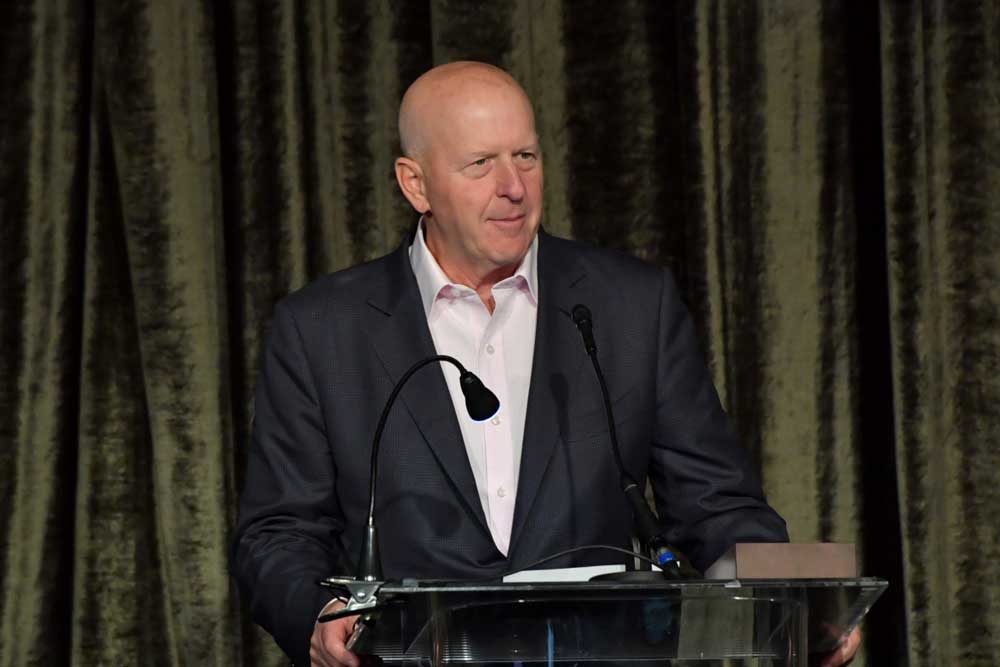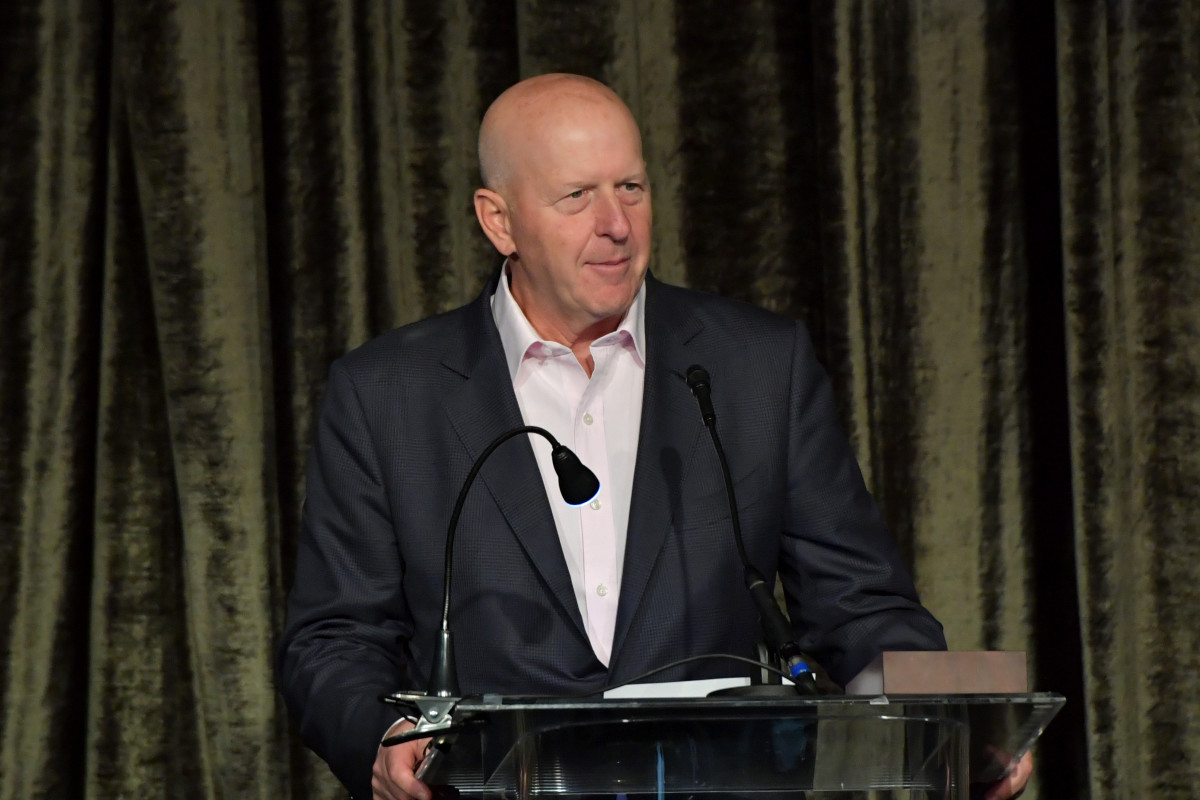Wall Street banks predict solid 2024 profits but rely heavily on one key outcome
Published 11:42 am Tuesday, January 16, 2024

- David Solomon, CEO of Goldman Sachs
The U.S. economy is likely to avoid recession this year, based on profit outlooks from the five biggest banks on Wall Street, but much will depend on when, and how often, the Federal Reserve lowers borrowing costs in the world’s biggest economy.
Goldman Sachs (GS) – Get Free Report and Morgan Stanley (MS) – Get Free Report rounded out a mixed earnings season for the country’s biggest investment banks Tuesday, with the former topping Wall Street forecasts and the latter taking a $535 million bottom-line hit on legal and regulatory charges.

Overall earnings for the top five banks were down around 21.2% from the same period in 2022, with collective net income of $19.73 billion.
However, their updates, which followed Friday reports from JPMorgan (JPM) – Get Free Report, Bank of America (BAC) – Get Free Report and Wells Fargo (WFC) – Get Free Report, suggest both a soft landing for the world’s largest economy and a recovery in deal and IPO markets that should be bullish for stocks this year.
Morgan Stanley’s chief financial officer, Sharon Yeshaya, told Reuters that the bank wais “optimistic and working on a premise of a soft landing” in crafting its 2024 outlook, while Goldman Sachs CEO David Solomon told investors that he’s seeing an uptick in merger talks and an improving IPO pipeline.
A soft landing is typically associated with an economy that sees slowing inflation and moderating growth, but doesn’t fall into recession.
No credit, no growth
Wall Street banks play a crucial role in the U.S. growth story by both providing the bulk of new loans to customers and businesses – which is crucial in a consumer-led economy – while also helping to set benchmark interest rates in bond, mortgage, and credit markets.
Related: Bond markets are reacting to key data that could be great news for stocks
Most of the top five see net interest income (a key profit metric that shows the difference between what it earns from lending and pays out on deposits) improving in 2024 but not until the second half of the year, when expected Federal Reserve interest-rate cuts begin to improve their bottom lines.
Banks can benefit from Fed rate reductions as the cost of funding their day-to-day activities declines and inflation slows, while the value of their longer-term lending increases as economic prospects brighten.
More on banking:
- JP Morgan hits record as 2024 forecasts offsets FDIC-led earnings miss
- Goldman Sachs heavyweights forecast what’s next for the stock market, economy
- JP Morgan CEO Jamie Dimon warns not to get too smug about a ‘soft landing’
However, that benefit is closely tied to the Fed’s rate path, which calls for around three 0.25-percentage-point reductions over the whole of the year. Markets, however, are betting on six, and the difference could have big implications for bank profits and broader economic growth.
Federal Reserve Gov. Christopher Waller, in fact, warned investors Tuesday that the central bank will “take our time to make sure we do this right” in terms of rate cuts, adding that the damage from having to reverse course and hike rates later in the year would be “the worst thing.”
D.A. Davidson analyst Peter Winter argues that “between a somewhat solid jobs report, decent (albeit slowing) economic growth and abating inflation pressures,” the ‘soft landing’ consensus appears well-established among the biggest Wall Street banks.
Fed rate path looms large
Bank of America’s closely tracked survey of global fund managers noted Tuesday that 41% of respondents see no recession risk this year for the U.S. economy, “a higher percentage than any other answer.”
But the monthly poll also notes that “both bond and equity investors say the Fed is the number one driver of price in 2024” while reporting “record optimism on rate cuts.”
If the Fed doesn’t deliver, that might put added pressure on their ability to generate profits from a rebound in global mergers and acquisitions, which slumped to a decade-low last year, as well as housing and consumer lending.
“There seems to be a disconnect between the forward curve assuming 6 rate cuts in 2024 vs. the Fed assuming 3 rate cuts and the outlook for a soft landing,” said D.A. Davidson’s Winter.
Compared with the year-earlier period, financial-sector profits are likely to grow 4.1% this quarter and contribute around $87.7 billion – second only to the $98 billion expected from the information technology sector – to the collective $469.3 billion S&P 500 earnings forecast.
Goldman’s capital markets outlook, then, could prove crucial, especially given the fact that under-pressure CEO Solomon needs to distance the bank from its recent consumer-lending failures.
“While we do not anticipate that business conditions will return to normal overnight, we do anticipate management to characterize an improving tone into 2024, which we think will support material [return on equity] expansion in the year ahead,” said JMP Securities analyst Devin Ryan.
Bank earnings rival tech in S&P 500 totals
Bank of America’s consumer outlook is also significant, with CEO Brian Moynihan telling investors on Friday that Americans are “still in the game (and) they’re still spending money.” He forecast “low- to mid-single-digit loan growth” for 2024.
Meanwhile, JP Morgan, which relies on investment banking fees and consumer lending for its overall profit growth as the biggest U.S. bank, struck an upbeat tone after its better-than-expected earnings report on Friday.
“As we turn to 2024, it shouldn’t be surprising that our outlook has us beginning to march down the path toward normalization of our returns,’ Chief Financial Officer Jeremy Barnum told investors.
“But despite the expected dissipation of the 2023 tailwinds and the presence of significant economic and geopolitical uncertainties, we remain optimistic about this franchise’s ability to produce superior returns through a broad range of environments.”
With stocks testing all-time highs and most analysts issuing bullish end-of-year targets for the S&P 500, some of which top the 5,500 point level, banks may prove more important than tech in extending last year’s rally.
- Action Alerts PLUS offers expert portfolio guidance to help you make informed investing decisions. Sign up now.







